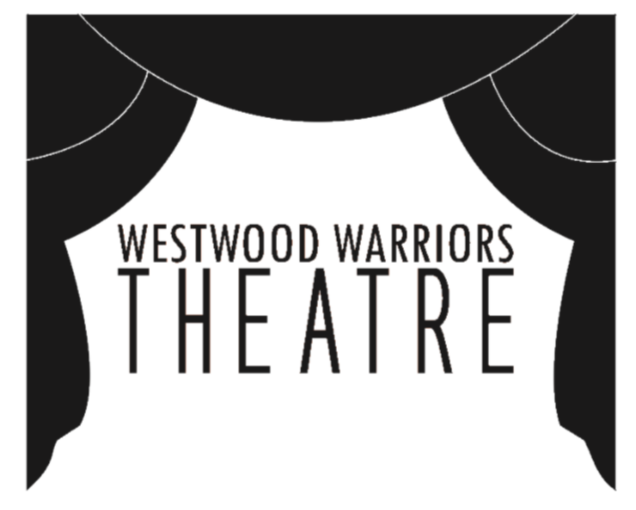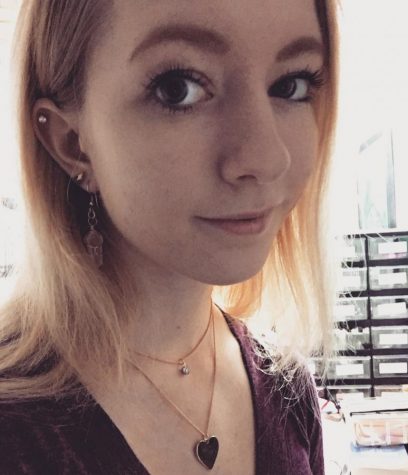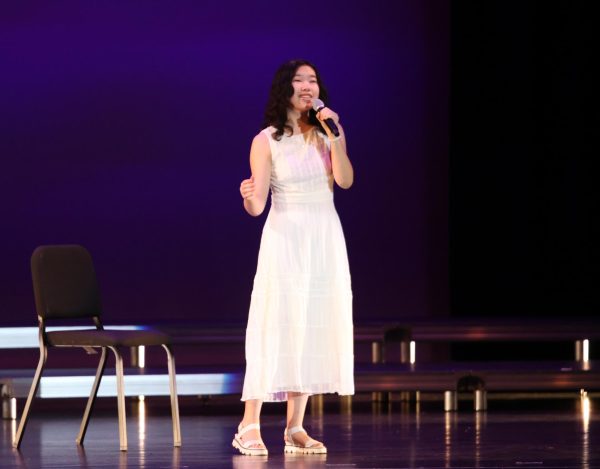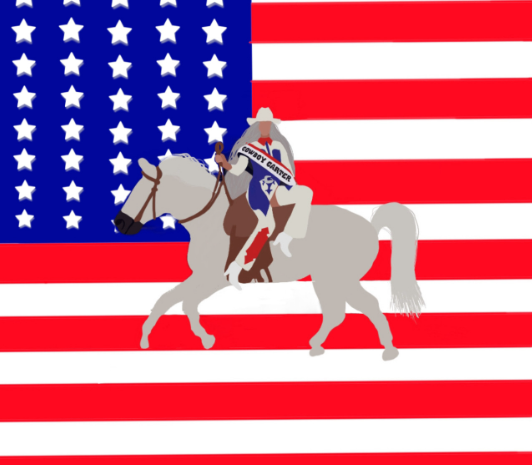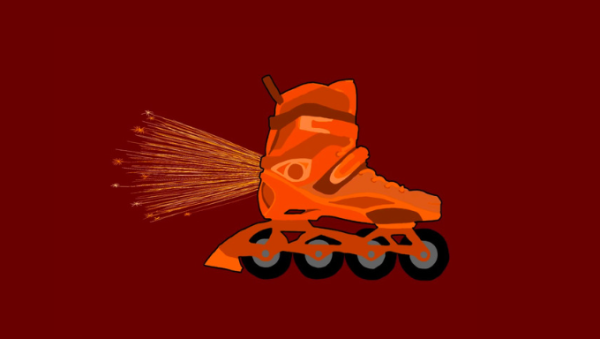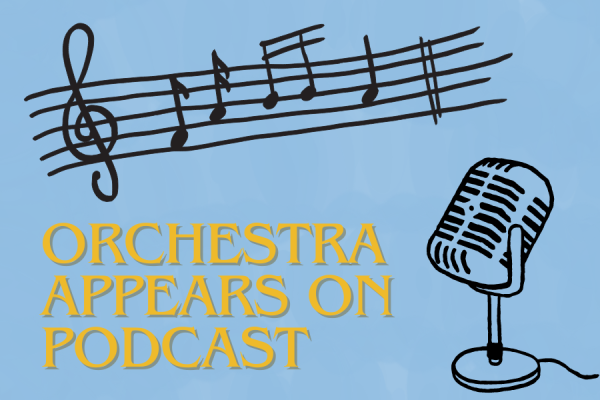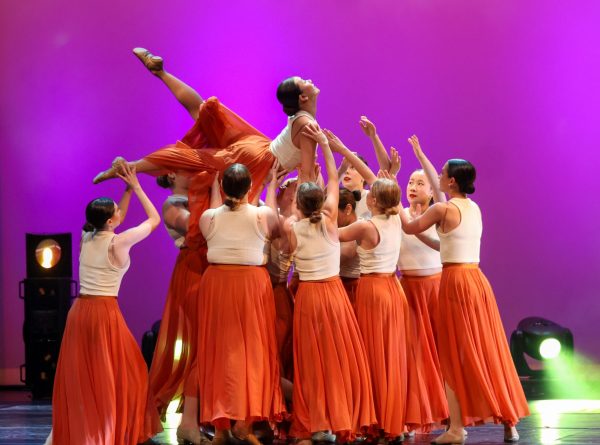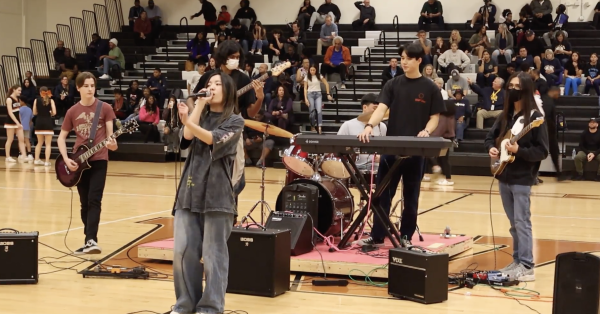Theater Hosts Fall Show Auditions
The Black Box is silent except for the murmuring of nervous actors. The lights shine hot and bright onto the stage, scarred by spike tape and scuffs from set-pieces. Whispered bits and pieces of monologues intermingle with the performers commiserating with one another in their anxiety.
This is the first part of the audition process for the Fall Show, a yearly performance put on by the Theater Department. The auditions are open to all students.
“The Fall Show this year is called Dearly Beloved, and it’s a comedy set in a small town in Texas,” Ms. Lydia Coats, Theater Director, said. “We are looking forward to getting as many students as we can, though the cast is medium-sized — about 11 people. We’re seeking to cast not just actors, but folks in crew roles and crew-heads for all of the major design and technology fields, and costume, and set, and sound, and lights, and props, as well as house and publicity. We’re looking to see if we can involve as many students as we can in the production of this open audition show.”
Although auditions for shows follow a traditional tryout template, they are still a complicated process.
“We do three days of auditions,” Ms. Hannah Milam, Theater Director, said. “Two of them are for monologues. Kids can come to either day, the 29th and the 30th, Tuesday and Wednesday. They need to prepare a comedic monologue. On Thursday, they do readings of the script that they have access to online ahead of time and we do what we call ‘callbacks’. On Friday, the cast list has been posted and that’s our first day of rehearsal.”
Students interested in crew positions go through a similar process. For them, however, monologue recitation is replaced by a paper application.
“The kids looking for crew positions sign up for an interview slot,” Milam said. “They come in to talk to me and the stage manager and we interview them about where they think they would fit best and the experiences they have. After that, we make our decisions from there for where they fit in the crew.”
Building a complete show takes ensemble and the rehearsal process for the Fall Show is equal parts grueling and invigorating. Although the cast and crew go through separate audition processes, much of the time spent in rehearsal is dedicated creating the show together as a unit.
“Our readthrough rehearsal is that Friday, and all our weeks after that are preparations for the production,” Ms. Milam said. “That means we run specific scenes, we build character relationships, we do character analysis. The crews are working on research for lighting elements and sound elements, props, costumes; front-of-house crew starts working on what that’s going to look like; publicity works on all of the posters; the tech classes are building the production; and then by the end of October we have a fully-fledged show with costumes and props and lighting and sound and publicity and marketing and all that. Rehearsals are 4:30 to 6:30 p.m. every weekday, and then we get to the week of the show — that’s our tech week — and those rehearsals go to 8:30 p.m.”
One might wonder why kids choose to perform, considering the amount of time required outside of class and the emotional energy that needs to be invested.
“There’s a difference between being in a theater class and being part of a theater show,” Aven Wright-Egbert ‘18 said. “In a theater class, you become an ensemble with the people in your class, but when you’re in a show, you branch across several classes within the department and you have this feeling that you’re part of a theater family, whether you’re a tech or an actor — those lines all get blurred. You form relationships across classes and with people outside the theater department who come in to help during our shows. It allows people to become a collective together, to do performing arts work and fine arts work together, and it’s a really creative experience. It’s amazing to be together across these boundaries.”
Theater is accessible to kids from all backgrounds, and students join for many different reasons.
“The reason we do this as a department is because we want to get kids to come together as a community of theater artists, and there’s no better way to do this than to put on a show,” Ms. Coats said. “That’s why we do it as a community. An individual might do it because they’re interested in theater as a career, either technical theater or performing theater; maybe they want to spend some time with their friends doing a fun activity like putting on a show; maybe they’re looking for the challenge of putting together a production that is challenging; maybe they are sick of being at home and watching Netflix and they want to make their own shows; some kids do it because it’s a creative outlet. But I think a lot of students do it because their friends do it, and we end up doing it because it’s fun to do it together.”
The Fall Show is on Oct. 26, 27, and 28 in the Big Black Box.

